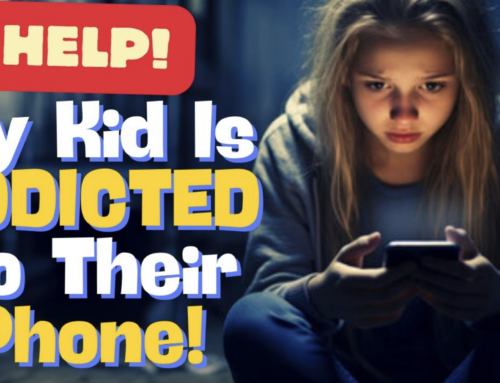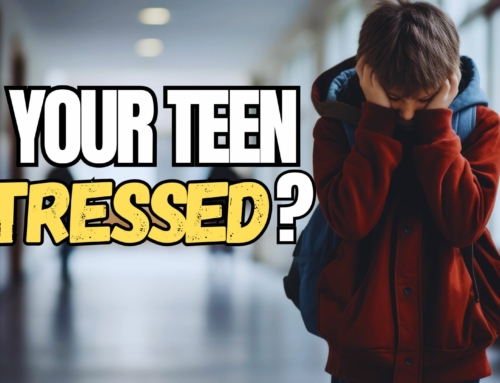Teen’s Guide to Effective Communication: Mastering the Art of Expression
Introduction
Hey there! Let’s talk about something that can totally change the game for you: effective communication. Whether it’s chatting with friends, presenting in class, or even hashing things out with your folks, how you communicate can really make or break your day. So, why is mastering the art of expression so crucial for you as a teen? Well, it’s simple—it’s all about making sure you’re heard and understood, and equally, understanding others.
Now, I know what you might be thinking: “I communicate all the time, why do I need a guide?” That’s a fair question! See, while we all talk and text every day, doing it effectively—meaning you get your point across clearly and listen well to others—takes a bit more finesse and, yes, a bit of know-how. It’s not just about talking; it’s about connecting. When you nail this, you’re not only boosting your personal relationships but setting yourself up for success in the adult world too.
In this guide, we’re diving deep into the nuts and bolts of effective communication. We’ll explore everything from the basics, like listening and understanding non-verbal cues, to overcoming common teen challenges like emotional barriers and the digital communication pitfalls. Plus, I’ll share practical tips and real-life scenarios to help you become a pro at expressing yourself and handling various communication settings—from heated debates with peers to those all-important college interviews.
Ready to transform how you connect with the world around you? Let’s get started by breaking down the basics of effective communication and why it matters more than you might think!
Understanding the Basics of Communication
What is Effective Communication?
Hey, let’s kick things off by understanding what effective communication really means. It’s more than just exchanging information; it’s about making sure that the info is not just sent but also received and understood the way it was intended. Imagine you’re telling a joke—if the punchline doesn’t land right, the joke flops, right? Similarly, for communication to be effective, your message needs to hit the mark perfectly.
Effective communication involves a few key components:
-
Clear articulation: Making sure what you say is easy to understand.
-
Active listening: Paying full attention to the speaker, not just planning what you’ll say next.
-
Feedback: Responding in a way that confirms whether you’ve understood or asking for clarification.
Mastering these elements ensures that whether you’re talking or listening, the conversation flows smoothly, and everyone gets the most out of it.
The Importance of Listening
Now, if there’s one superpower you want to have, it’s listening. Yeah, you heard that right—listening! It’s half of all effective communication. When you really listen, not just wait for your turn to speak, you understand better, learn more, and yes, even argue less. Active listening helps you catch the nuances in a conversation, the emotions behind the words, and the unspoken context.
Here are a couple of tips to sharpen your listening skills:
-
Focus: Put down that phone, look at the speaker, and really tune in.
-
Echo: Sometimes, repeating back what you heard can help clarify things and shows you’re engaged.
Verbal vs. Non-Verbal Communication
While words are powerful, a lot of communication happens without them. Your body language, facial expressions, and even the tone of your voice convey messages. For example, crossed arms might say, ‘I’m not really open to this,’ while a smile can say, ‘I’m glad we’re talking.’
Understanding both verbal and non-verbal cues is crucial. It helps you read the room and adjust your approach accordingly. It’s like knowing if a pitch is going to be a fastball or a curveball—you adjust your swing to make the best hit.
Now that we’ve covered the fundamentals, let’s dive into some of the common barriers you might face as a teen communicator.
Barriers to Effective Communication for Teens
Emotional Barriers and How to Overcome Them
As a teen, you’re riding a rollercoaster of emotions, and sometimes, they can get in the way of clear communication. Ever had a moment where you were so frustrated or upset that you couldn’t get your words out right? That’s an emotional barrier doing its thing. But here’s the good news: you can learn to manage these emotions and keep them from hijacking your conversations.
Here’s how you can overcome these emotional barriers:
-
Pause and Reflect: Feeling heated? Take a moment to breathe and collect your thoughts before you respond.
-
Express Feelings: Instead of bottling up, try expressing how you feel. Use “I” statements like “I feel upset when…” This can prevent misunderstandings and build empathy.
The Impact of Technology on Teen Communication
Technology is awesome, right? It keeps you connected with friends, helps with schoolwork, and lets you stream your favorite shows. But when it comes to communication, it’s a double-edged sword. Texts and DMs can’t convey tone or body language, which sometimes leads to misinterpreted messages. Ever got a one-word reply and spent hours wondering what it meant? Yep, that’s tech getting in the way.
To keep tech from messing up your message, try these tips:
-
Be Clear: When messaging, choose your words carefully. Remember, there’s no tone in text.
-
Ask for Clarification: If you’re unsure about a text, don’t guess—ask what they meant. This can save you a lot of worry and misunderstandings.
Misunderstandings and Assumptions
Misunderstandings can throw a wrench in your communication game. They often happen when you assume you know what someone else means without really checking in. Assumptions are like those little shortcuts your brain takes, but sometimes they lead you down the wrong path.
Avoiding misunderstandings is pretty straightforward:
-
Clarify and Confirm: Always check your understanding. Ask questions like “So, are you saying that…?”
-
Don’t Assume, Verify: Before reacting, make sure you’ve got the right end of the stick. This goes a long way in keeping conversations clear and drama-free.
Understanding these barriers and knowing how to navigate them will not only improve your communication but also strengthen your relationships. It’s about ensuring you and the people you talk to feel understood and valued.
Practical Tips for Improving Communication Skills
Developing Active Listening Skills
Active listening is like a secret weapon for effective communication. It’s all about truly engaging with the person you’re talking to, not just hearing them out. This skill can make a huge difference in how you connect with others, helping you understand their point of view and responding more thoughtfully.
Here’s how you can develop better active listening skills:
-
Give Full Attention: Avoid distractions when someone is speaking. Put away your phone and focus on the conversation.
-
Show You’re Listening: Nod occasionally, maintain eye contact, and maybe throw in a thoughtful “uh-huh” or “I see.”
-
Reflect and Ask Questions: Show that you’re engaged by paraphrasing what they’ve said and asking questions to delve deeper.
Expressing Yourself Clearly and Confidently
Your voice matters, and expressing yourself clearly is key to being understood. Whether it’s standing up for yourself, sharing your thoughts in class, or just chatting with friends, here are some tips to help you communicate with confidence:
-
Be Clear and Concise: Keep your messages simple and direct. Avoid rambling to ensure your point isn’t lost in too many words.
-
Practice: Like any skill, communication gets better the more you do it. Try practicing your talking points or even rehearsing conversations you anticipate being tricky.
-
Stay Positive: Keep a positive tone, even in difficult conversations. This can prevent the discussion from becoming confrontational and helps keep the lines of communication open.
The Role of Empathy in Communication
Understanding and sharing the feelings of another person can elevate your communication game. Empathy allows you to connect on a deeper level and can turn a simple conversation into a meaningful exchange.
To enhance your empathetic communication, consider these approaches:
-
Listen to Understand, Not to Respond: Sometimes, it’s not about your reply, but about understanding the other person’s perspective.
-
Acknowledge Their Feelings: You don’t have to agree with them, but acknowledging how they feel can validate their emotions and foster a closer connection.
-
Respond Appropriately: Use what you’ve learned about their feelings to guide your response. This can show that you care and are truly engaged in the conversation.
By putting these practical tips into action, you’ll not only improve your communication skills but also build stronger, more meaningful relationships with those around you.
Communication in Action: Real-Life Scenarios
Communicating with Parents and Adults
Talking to adults, especially your parents, can sometimes feel like navigating a minefield. Differences in perspectives, expectations, and even generational communication styles can make these conversations tricky. Here’s how to make it smoother:
-
Choose the Right Time: Timing can be everything. Pick a moment when everyone is relaxed and not preoccupied with other stresses.
-
Be Respectful but Honest: Show respect in your tone and approach, but also be honest about your feelings and opinions. This builds trust and makes it more likely that they’ll listen to your side.
-
Use ‘I’ Statements: Instead of accusing (“You never listen to me!”), frame things from your perspective (“I feel unheard when…”). This can reduce defensiveness and open up more constructive dialogue.
Handling Difficult Conversations with Peers
Whether it’s a disagreement or a sensitive topic, communicating with peers can sometimes escalate quickly. Here are strategies to keep things on track:
-
Stay Calm: Keep your emotions in check. If you feel yourself getting heated, take a deep breath and pause the conversation if necessary.
-
Focus on the Issue, Not the Person: Discuss behaviors and situations rather than making personal attacks. This helps keep the conversation productive.
-
Seek to Understand: Ask questions to get clarity on their point of view. Understanding where they’re coming from can help you find common ground.
Effective Communication in School and Work Settings
In more formal environments like school or your part-time job, clear and professional communication is key. Here are some tips:
-
Be Prepared: Whether it’s a class presentation or a meeting at work, being well-prepared shows respect for your audience and can ease your nerves.
-
Be Clear and Direct: Especially in a professional setting, clear and concise communication is appreciated. It saves time and reduces misunderstandings.
-
Follow Up: After meetings or discussions, a quick recap via email or a follow-up meeting can ensure everyone is on the same page.
Each of these scenarios requires a slightly different approach, but the core principles of effective communication apply across the board: clarity, empathy, and respect.
Enhancing Digital Communication Skills
Navigating Social Media Conversations
Social media is like the town square for today’s digital world—it’s where opinions clash, trends take off, and sometimes, misunderstandings happen fast. Here’s how to keep your digital interactions positive and productive:
-
Think Before You Post: It’s easy to get caught up in the heat of the moment. Take a moment to consider the impact of your words before hitting “send.”
-
Stay Respectful: Even when you disagree, keep the conversation respectful. Avoid personal attacks and focus on discussing ideas.
-
Use Emojis Wisely: Emojis can help convey tone but use them wisely to ensure they’re adding clarity, not confusion.
Email and Text Messaging Etiquette
Emails and texts are staples of communication but come with their own set of challenges, especially when it comes to tone and clarity. Here’s how to keep your messages clear and professional:
-
Be Concise and Clear: Get straight to the point. Long-winded messages can lose their impact and confuse the receiver.
-
Proofread: Typos or grammatical errors can make a bad impression and sometimes distort your message. A quick proofread goes a long way.
-
Consider Your Audience: Adjust your tone depending on who you’re talking to. A text to a friend can be casual, but an email to a teacher should be more formal.
The Dos and Don’ts of Online Communication
Online communication has its own etiquette. Here are some key dos and don’ts:
-
Do Use Clear Subject Lines: Especially in emails, a clear subject line helps the recipient know what to expect from your message.
-
Don’t Overuse Caps Lock: Using all caps can come across as shouting and can be perceived as aggressive.
-
Do Follow Up: If you haven’t received a response to an important message, it’s okay to follow up. Sometimes messages do get overlooked.
Mastering these digital communication skills is essential in today’s world. It ensures that your messages are not only heard but also respected and appreciated, whether you’re tweeting, emailing, or texting.
Keeping the Conversation Going: Continuous Improvement
Seeking Feedback and Self-Assessment
Improvement in any skill, including communication, comes from a cycle of practice, feedback, and reflection. To keep advancing your communication abilities, it’s crucial to actively seek feedback and regularly assess your own performance.
-
Ask for Feedback: After conversations, especially important ones, ask for feedback. You might ask a teacher, friend, or family member how clear your points were or if your tone was appropriate.
-
Self-Reflect: Spend some time reflecting on your conversations. Think about what went well and what could have gone better. Consider how your words and actions affected the outcome of the discussion.
Engaging in Regular Practice
Just like any other skill, the more you practice communication, the better you get. Look for opportunities to engage in conversations, particularly in situations that might be outside your comfort zone.
-
Join a Club or Group: Participating in a debate club, drama group, or even a sports team can provide valuable practice in different communication styles.
-
Role-play Scenarios: Practicing difficult conversations ahead of time can make you feel more confident when the real situation comes around. You can do this with a friend or mentor.
Resources and Tools to Help You Improve
There are many tools and resources available that can help you enhance your communication skills. Here are a few to consider:
-
Workshops and Seminars: Many schools and community centers offer workshops on effective communication.
-
Online Courses: Websites like Coursera and Udemy offer courses in everything from public speaking to interpersonal communication.
-
Books and Podcasts: Look for books and podcasts that focus on communication skills. These can provide insights and tips that you can apply in your daily interactions.








